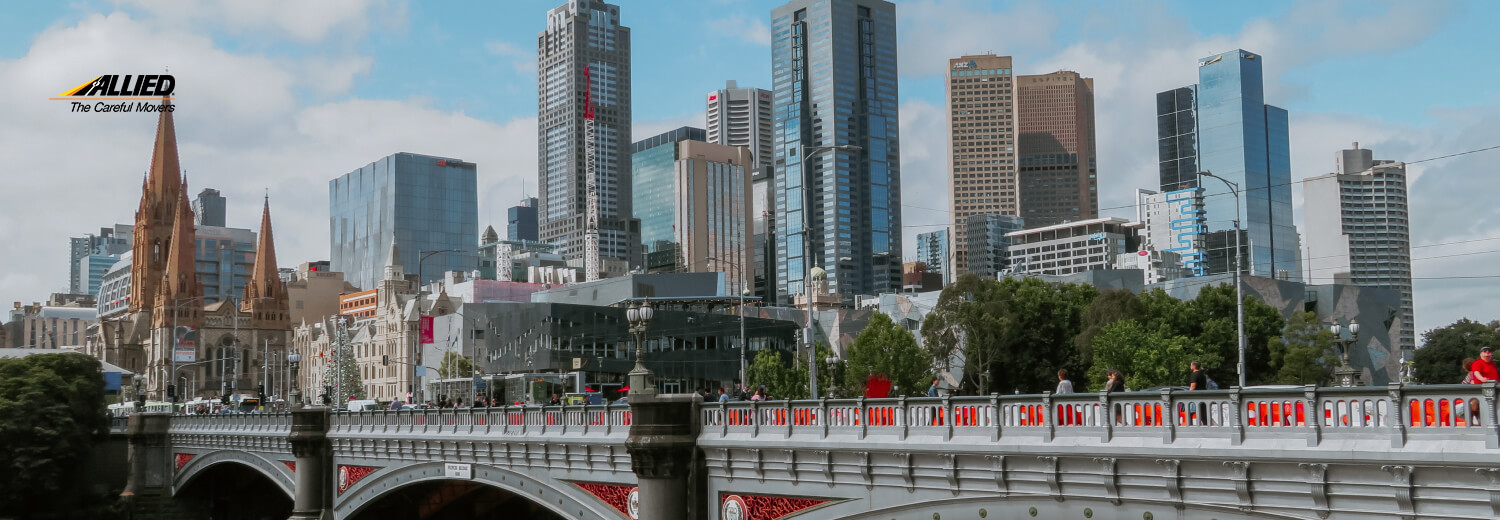Taking the crowning glory as the coffee and cultural capital of Australia, Melbourne has a lot to offer its population of over 5 million people. There may be plenty of cities around the world that are similar to Melbourne, but there’s nothing quite like the real deal. There’s plenty to do here, from strolling laneways and marvelling at street art to heading out to one of the city’s world class restaurants, or catching a show at one of its many theatres. Thanks to this, people from a range of backgrounds and budgets can enjoy their own take on the Melbourne lifestyle.
Understanding the cost of living is an important consideration, whether you’re moving internationally or making an interstate move to Melbourne. In this guide, we’ll break down the average cost of living in Melbourne, giving you insight into how expensive this city is.
Accommodation
Likely the largest expense for anyone living in a big city is the cost of housing. If you’re wondering about the average cost of rent per month in Melbourne, then you should first have a think about where you’d like to live.
Living in the CBD will set you back more than living in the suburbs, but the added cost might be worth it depending on your lifestyle. A one bedroom apartment in Melbourne’s CBD costs, on average, about $2,200 per month. If this is over-budget or city-living isn’t for you, then Melbourne has a variety of vibrant suburbs all within quick commuting distance of the city, which will come with a slightly lower price tag. Areas like Fitzroy, Northcote, South Yarra, and Windsor are just a stone’s throw from the CBD, each with their own mini-city feel. If the beach is more your scene, then look into areas like Elwood and St Kilda, but be prepared to pay for the luxury of being by the sea!
Living in a house share is a good way to keep rental costs low in Melbourne, while still being able to rent in a location that you love.
Getting Around
Another cost that will be impacted by where you choose to live is transportation. Melbourne’s public transport system, called PTV (public transport Victoria), is made up of a network of trains, trams, and buses, which are paid for using a Myki card. The Melbourne metropolitan area has two paid zones, as well as a free tram zone in the inner city. Your Myki fare will vary based on where you travel and how often, and if using PTV frequently, it may be worth purchasing a weekly pass at $53 for use in both zones.
Bills and Utilities
Melbourne’s seasonal weather means that heating your home in winter and cooling it in summer will likely add a reasonable amount to your monthly utility bill. It’s difficult to say for certain what this might cost you, as there are an array of factors that will impact this, including your providers, your heating and cooling systems, and how often you run them.
In Melbourne, your water will be billed separately, and costs an average of $60 per month for a single-person household, and $100 for a home with four people.
Standard wifi plans in the city are connected through NBN, costing anywhere within an average range of $70 to $90 per month.
Lifestyle
How you choose to spend or save money when living in Melbourne is completely up to you! The city has something to offer everyone from students to working professionals and families, and here are some of the key cost breakdowns for day-to-day life:
Gym
Much like Sydney, Brisbane, Perth, and other major Aussie cities, Melbourne has a booming fitness scene. The number of gyms and classes around makes the pricing competitive, and you’ll be able to join a gym chain in Melbourne for around $20 per week. Many of these memberships give you access to multiple gym locations, or you can save an extra couple of dollars by choosing to only use your local gym.
Entertainment
Cinema tickets around Melbourne come in at approximately $20, with various cinemas offering midweek discounted and half-price rates. This makes it the perfect evening activity after a long day of work, as long as you shop around for the best deal.
If you want to take in the city without breaking the bank, there are also plenty of things you can do for free. From a stroll through the Botanic Gardens to taking in free exhibits at the NGV (National Gallery of Victoria), you can experience some of the best of Melbourne without spending a cent. State Library is another great place to spend an afternoon, and also a meeting point for many of the city’s free walking tours which are an educational and entertaining way to pass an afternoon.
Nightlife
If you’re ready to hit the town and get a taste of Melbourne’s exciting nightlife scene, you’ll want to factor this into your monthly budget. Most clubs, and venues have a cover fee between $10 and $20, which you may be able to avoid paying if you go early enough in the evening. Cocktails cost an average of $23 each, while mixed spirits will be around $15. Don’t forget about the taxi fare home, and remember that in Australia, surge pricing applies to busy times and unsociable hours. If you’re heading out on the town over the weekend, then you can take advantage of PTV's Night Network; 24 hour operations of select train, tram, and bus routes.
